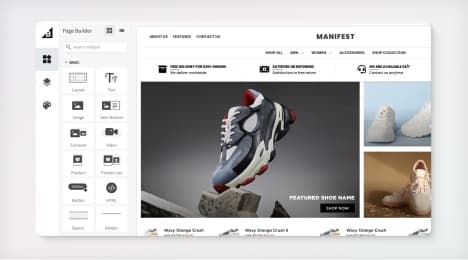
Watch Our Product Tour
See how BigCommerce helps you build and manage your online store with ease.
- Ecommerce Insights

6 Key Steps to Launch Your Online Store
Explore our Launch Foundations series to get your BigCommerce store up and running quickly.
BigCommerce helps growing businesses, enterprise brands, and everything in-between sell more online.
What is O2O (Online-to-Offline) Commerce
In the past, offline and online customer experiences and interactions have collectively remained separate. Although there are cross-platform support options such as buy online and ship to store, that’s not exactly what you’d call a merger between the two commerce types.
Thanks to modern technologies such as mobile and in-app or location-based experiences, many businesses are now offering both options to their customers. We can effectively refer to it as online-to-offline, or O2O commerce.
What is Online-to-Offline Commerce?
The term is a bit disingenuous, though. What is the main focus of O2O? How is it different from delivering a seamless or cross-platform experience, at least in a traditional sense?
For starters, O2O involves engaging with your online customers in various ways to encourage or entice them to leave the digital space and enter a physical one. In other words, you’re trying to push online customers to come into a local store or physical location. This is achieved by merging strategies from the two different types of commerce. You’re using both online marketing and advertising techniques, in addition to brick-and-mortar style promotions.
If you want to be pedantic, instead of brick-and-mortar you can call it click-and-mortar.
Online-to-Offline Commerce Basics: The Breakdown
That earlier example of buy online and ship to store is actually a common technique used by O2O commerce companies, but it’s about more than just that particular experience. Allowing items bought online to be returned or exchanged in store is another example. Another great one is setting up a digital station in-store that allows your customers to shop your online inventory from a brick-and-mortar location.
It is essentially any process or customer experience feature that allows your audience to move between the two commerce types.
It’s a natural step forward for many physical and traditional retailers, especially if they hope to compete with e-commerce brands. Instead of treating the two different channels as separate entities or even competitors, you merge them to create one seamless business and customer platform.
Setting up demos or product examples in your physical store and allowing customers to review the items is a great idea. In fact, there are a great many products that customers and people would prefer to see up close and personal before buying. IKEA, the popular Swedish furniture store, handles this swimmingly.
Customers can browse products, furniture, and goods in the massive stores — which are often considered to be a maze — and then order the products online, which are shipped to their doorstep. Smaller items can be bought in-store.
In this way, IKEA allows their customers to experience the best of both worlds. If you’ve ever been to a local store, you know how packed and chaotic it can be.
O2O is different than a traditional cross-platform experience, because in those scenarios you’re generally focused on allowing your customers to simply move between different channels. You might have one or two O2O options or practices, but that’s not the majority of your business. With online-to-offline, you’re effectively making it part of your regular operations, which means incorporating as many techniques and options as possible.
Walmart Has the Right Idea
Walmart Grocery allows customers to shop online or via a mobile app and then visit a local store. Instead of going into the store, however, you pull up to a special pickup station and store employees bring your order out to you. They talk to you briefly and let you know if there were any item substitutions or problems, and then they load your groceries into your car for you.
This doesn’t eliminate the in-store experience, nor does it overshadow the entirety of online shopping with the company. You can still buy items online and have them shipped directly to your home, or even to a local store for free.
Walmart Grocery is simply another service that allows customers an O2O-type experience. It’s not the only company to do something like this, either. Publix and several grocery stores offer a similar service. Amazon even purchased Whole Foods with the intention of offering a fresh food delivery and local store option for its customers.
It’s the natural progression for brick-and-mortar retailers that want to modernize their customer experiences. Rather than stick to physical or local opportunities exclusively, you can bridge the gap and offer both in a more convenient format.
BigCommerce helps growing businesses, enterprise brands, and everything in-between sell more online.
Start growing your ecommerce business even faster.
High-volume or established business? Request a demo